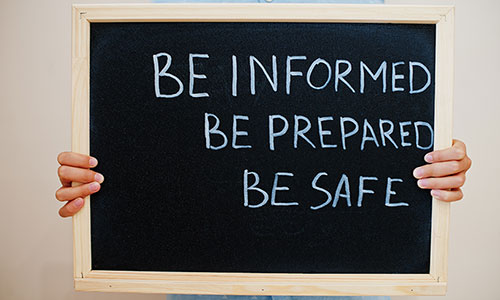There is no question that parents should be able to send their children to school with certainty that they are safe and free from harm. Unfortunately, the ongoing threat of active shooter situations in the U.S. means that parents, teachers and students alike must face the horrifying possibility of one happening on their own school grounds.
More than 311,000 students at 221 schools have experienced school gun violence since the Columbine High School massacre in 1999. These numbers continue to climb, with school shootings in 2020 and 2021 accounting for the highest number in two decades. According to Everytown Research, in 2022 alone there have already been 95 incidents of gunfire on school grounds.
These statistics paint a sad picture of the reality of life in today’s schools. It is time that we as a society do something to take action against this epidemic. Recent active shooter situations across the country, including the tragedy at Robb Elementary in Uvalde, Texas, further emphasize that securing our schools is a critical problem in need of addressing.
Most school security systems are reactive, meaning that alarms go off and trigger people to run for safety in the event of an emergency. To have a truly effective security system, it should be both reactive and proactive – with the ability to prevent or identify potential threats before danger strikes (while also respecting people’s privacy). In this article, we’ll discuss what schools should consider when developing their school security plan.
Assess for Vulnerabilities
When evaluating a school system, you must first assess vulnerabilities by asking questions such as:
- What are the potential sources of threats on campus (including students, teachers, disgruntled employees and visitors)?
- What is the school setting (urban or rural)?
- How would a potential threat enter a school’s campus?
- How long would it take for first responders to arrive in an emergency situation?
Evaluate Your Campus
Once a vulnerability assessment is complete, it is important to do a thorough evaluation of the school campus. This includes both the building interiors and the exterior, including parking lots, playgrounds and playing fields. What are the points of entry? Are there security systems and protocols in place for the locations?
Next, evaluate your security systems and protocols for potential weaknesses., This includes blind spots and hiding places, poor lighting, staff non-compliance to procedures, and the age and functionality of the security technology. There are many online resources to assist with vulnerability assessments. Local emergency responders can help with this procedure, as well as a specified vulnerability consultant.
Target Harden the Location
The ultimate goal of hardening a school’s security is to deter a potential threat actor from targeting the school in the first place. Certain measures can be taken to ensure your location is a difficult target, so that the bad actor decides it is not worth the effort. To fully harden a school’s location and be prepared for a potential attack, it is crucial to take a multi-layered approach.
This includes:
- Physical Security: Make sure there are multiple physical security features throughout the campus, including locks or bars on windows, security doors with limited access, as well as perimeter security and after-hours security. There should be sufficient lighting in parking lots and the buildings’ exterior, and no bushes or items blocking security cameras or providing hiding places for bad actors.
- Technology: Technology implementations might include intrusion detection systems, security cameras at all access points and hallways, and gun detection systems that can detect potential guns brandished on campus, alert staff and first responders, and provide real-time intel on the shooter’s location, appearance and weapon.
- Lockdown System: Have the ability to remotely lock down certain wings or areas of the school in case of an emergency event. This will help isolate the threat.
- Communications: Consider implementing a communications technology that will immediately contact first responders in the event of a threat; ensure there are protocols in place for contacting teachers, students and parents.
- Protocols, Procedures and Training: Procedures for following safety rules should be clearly defined for both students and faculty. Emergency Response Plans should be established and practiced by staff, students and local first responders. While it is important that regular drills be conducted, schools must be sensitive to the emotional fallout and trauma that they can create and avoid making the drills too realistic.
Frequently Review Your Security Measures and Policies
Once the above steps are taken, it is crucial to regularly revisit them and re-assess as the school year progresses. Administrators, teachers and crisis team members should meet at least 2-3 times a year to review how the safety protocols in place are working, and discuss ways to adjust or strengthen them as needed.
Enough Is Enough
In a country where mass shootings have become commonplace, it is clear that “thoughts and prayers” are not enough, and proactive action must be taken to properly secure our schools and protect our youth. A bad actor only needs to find one entry point or weak link to enter a school building and pose a serious risk – and in the case of an active shooter, seconds count.
However, no single technology or security function is enough. To take proactive action and truly strengthen a school’s security, a multi-layered approach is required. With multiple security measures and an effective school security plan in place, school faculty and first responders will have a much better chance of mitigating gun-related incidents and saving lives.
Mike Lahiff is chairman and CEO of ZeroEyes, an AI weapons detection solutions provider.
Note: The views expressed by guest bloggers and contributors are those of the authors and do not necessarily represent the views of, and should not be attributed to, Campus Safety.







